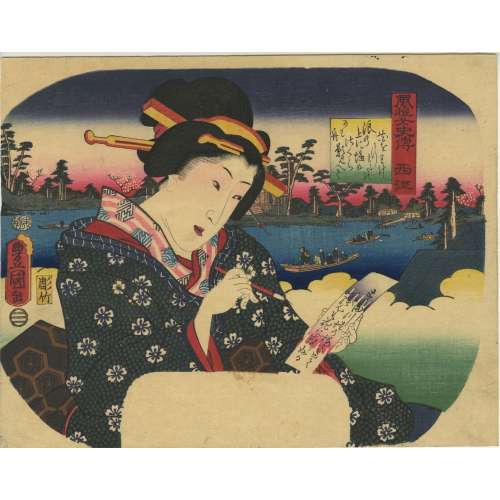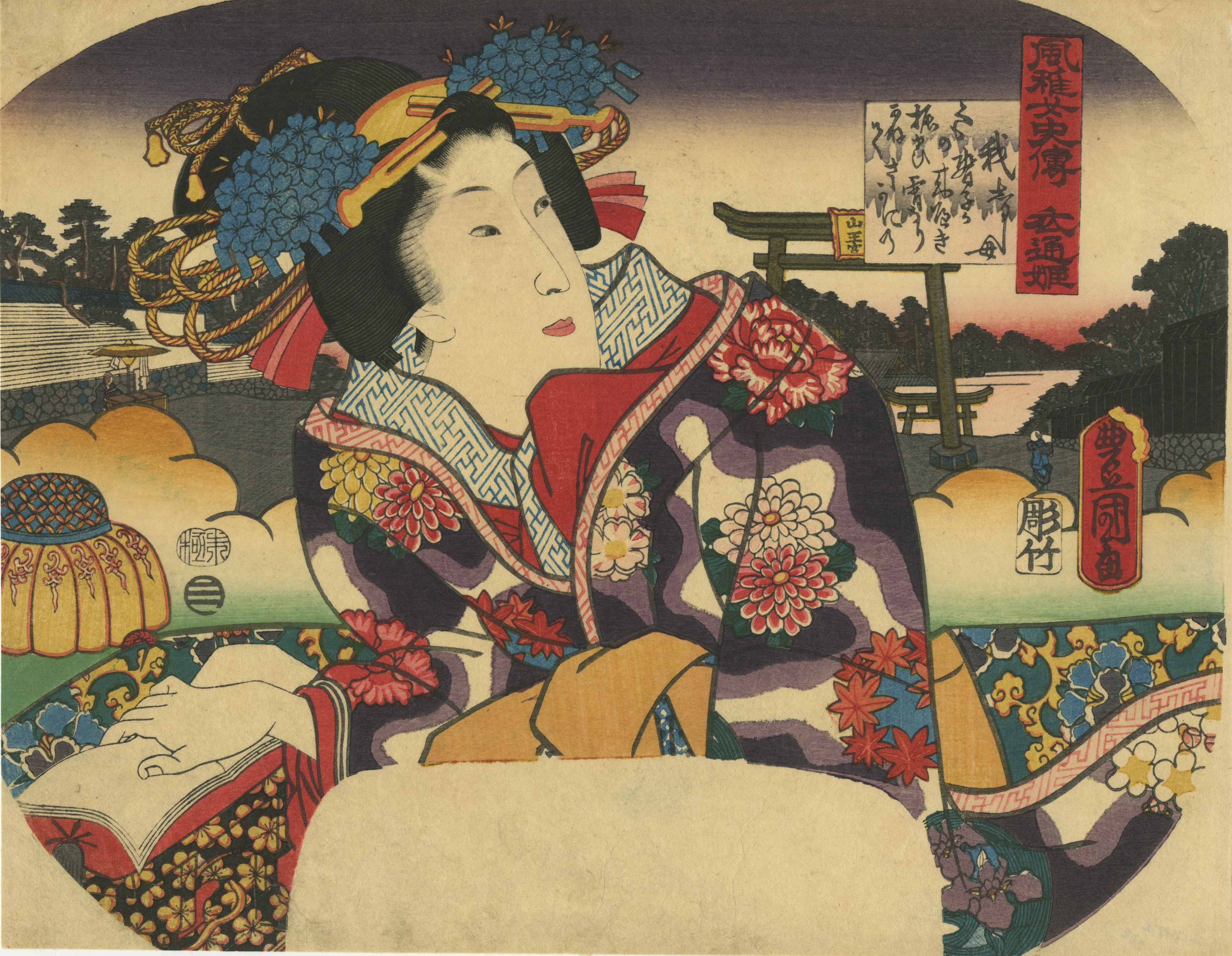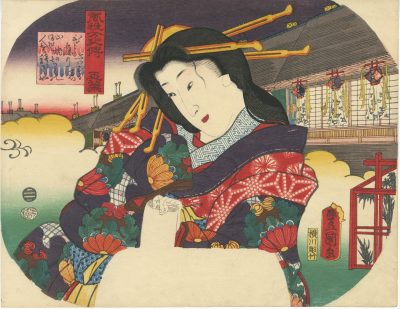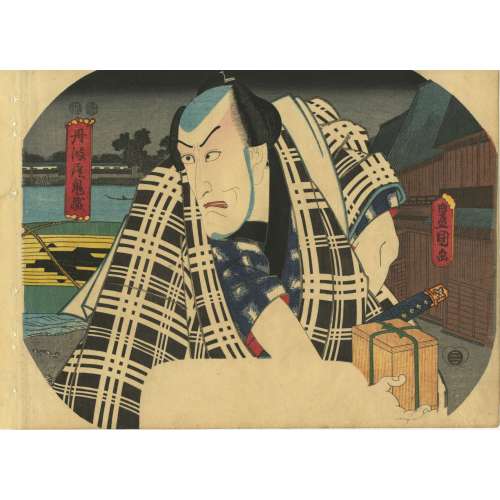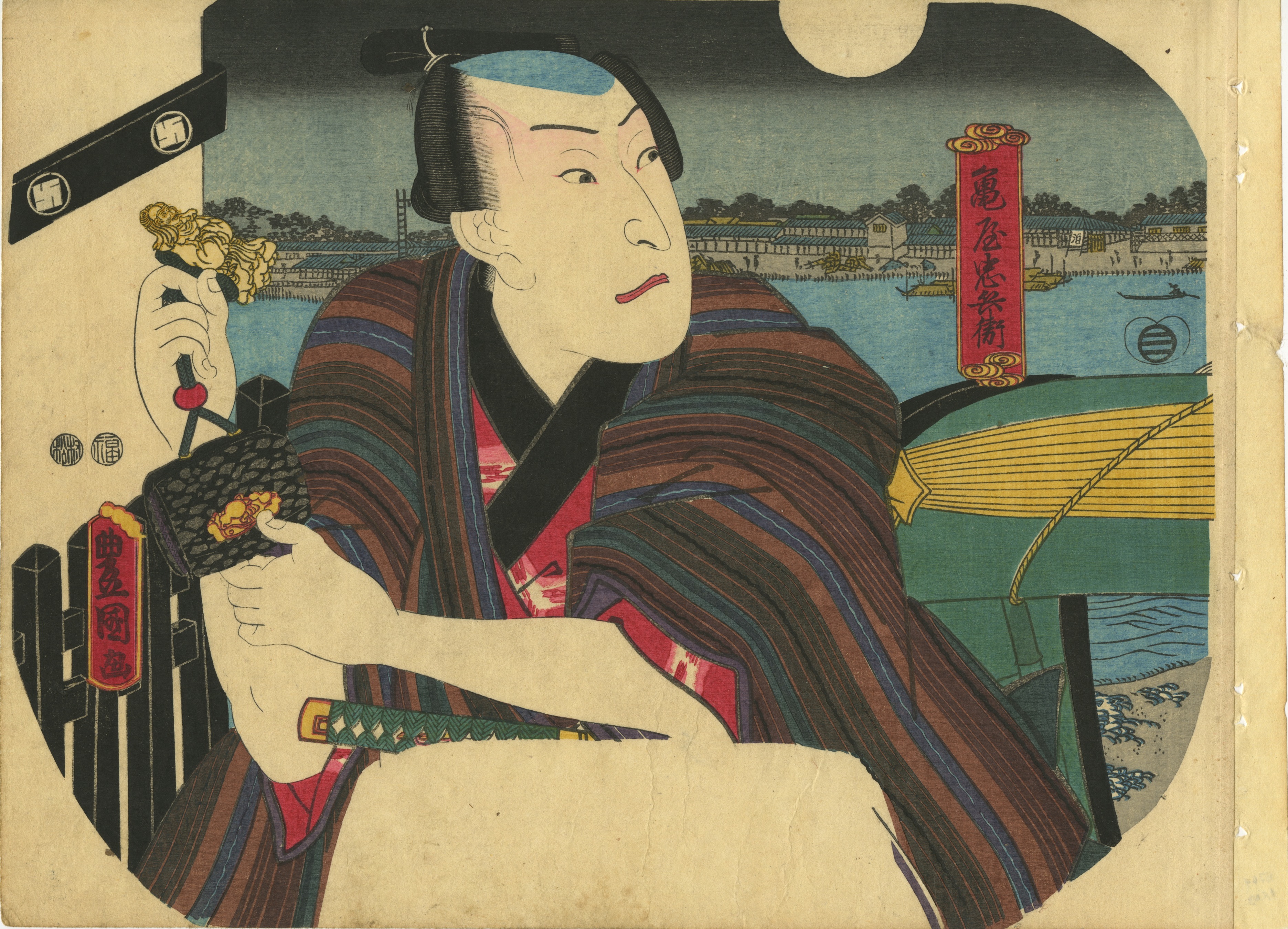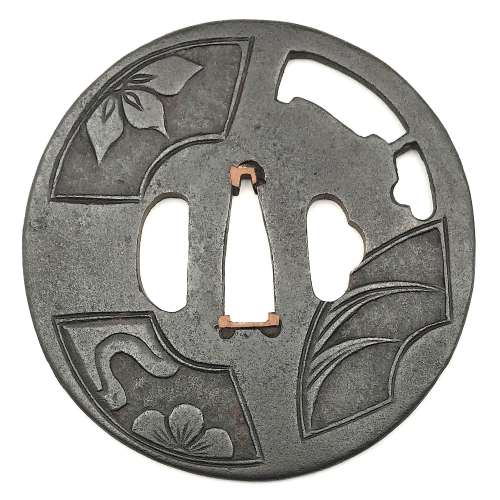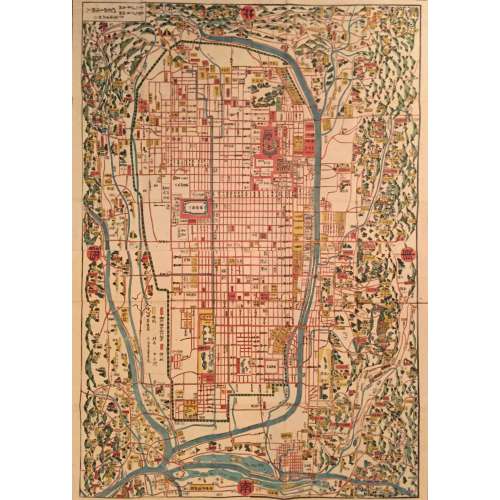Artist:
Utagawa Kunisada [歌川 国貞] a.k.a. Utagawa Toyokuni III [三代歌川豊国] (Japanese, 1786 – 1865).
Signed:
Toyokuni ga [豊国 画] in a red toshidama cartouche.
Publisher:
Ibaya Senzaburō [伊場屋仙三郎] (Japanese, c. 1815 – 1869).
Block carver:
Yokokawa Takejirō [横川竹二郎] (Japanese, fl. 1845 – 1863); seal Hori Take [彫竹].
Double nanushi censor seals: Mera & Murata (1847-50).
Title: Cool Breeze on Tenpōzan Hill in Naniwa [浪花天保山の涼] (
Naniwa Tenpōzan no ryō).
An uncut fan print (uchiwa-e), depicting a gentleman (most probably kabuki actor Nakamura Utaemon IV) holding a pipe with the view of
Tenpōzan Hill [天保山] in Naniwa (Osaka) in the background.
A distinctive structure on the left is the Sumiyoshi Lantern [住吉高灯篭] (Sumiyoshi takadōrō), which was destroyed by a typhoon in 1950. The character 翫 –
moteasobu – on the gentleman’s robe means "take pleasure, play an instrument".
Nakamura Utaemon IV [中村歌右衛門] (Japanese, 1796 – 1852); other names: Nakamura Shikan II, Nakamura Tsurusuke I, Nakamura Tōtarō.
The character is visually similar to a gentleman drinking tea on a veranda under the shining moon from the series ‘Moon, Sun, Stars’ [月日星] (
Getsu hi hoshi), see
SVJP-0211-1.2016: The Moon.

As noted by Horst Graebner, the gentleman also resembles the character on another Kunisada's actor print, published in 1852 (Waseda University Cultural Resources Database №
114-0232):
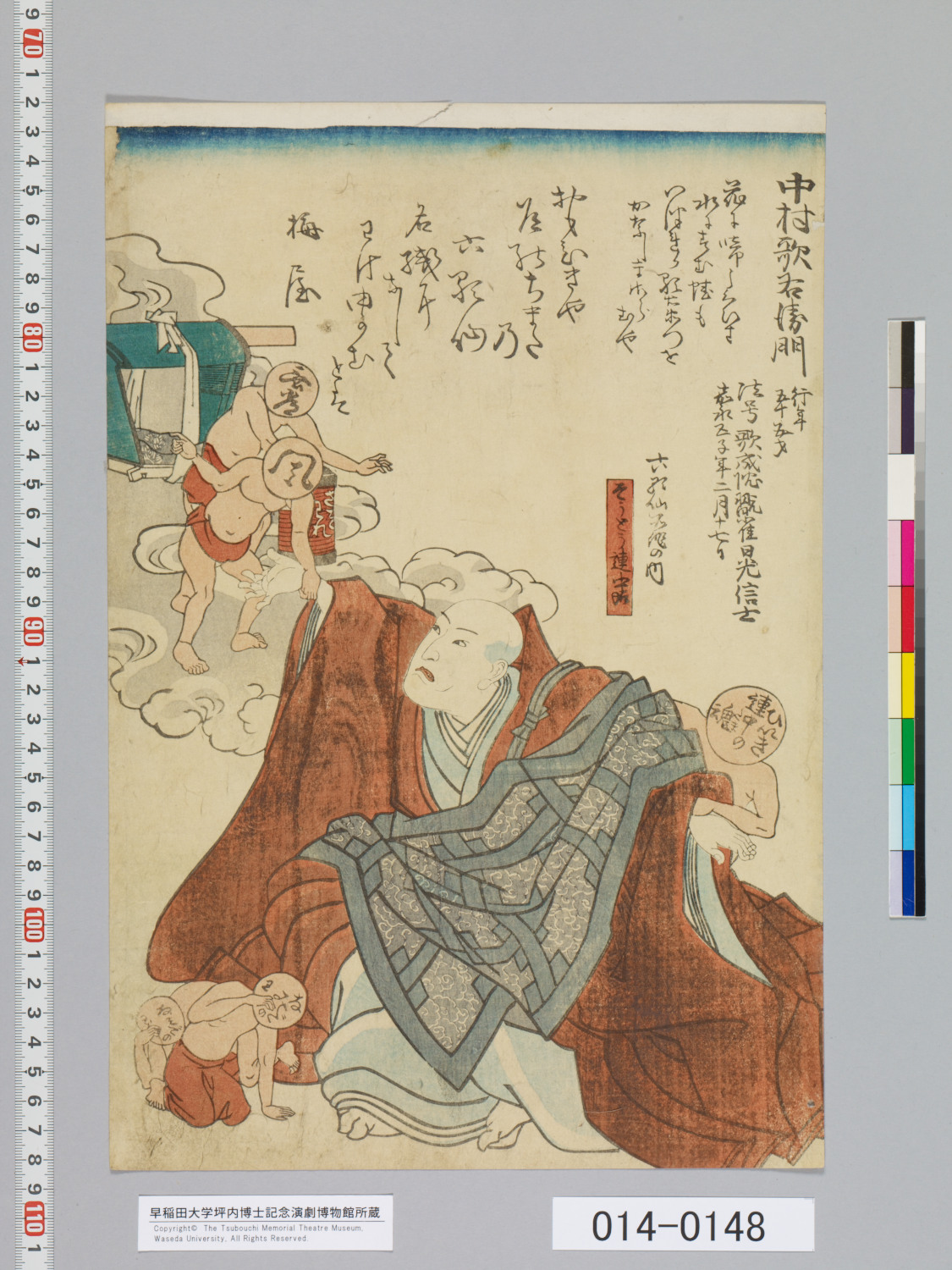
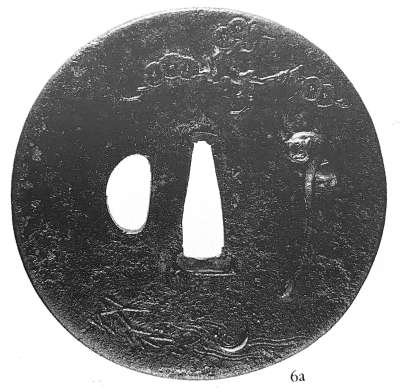



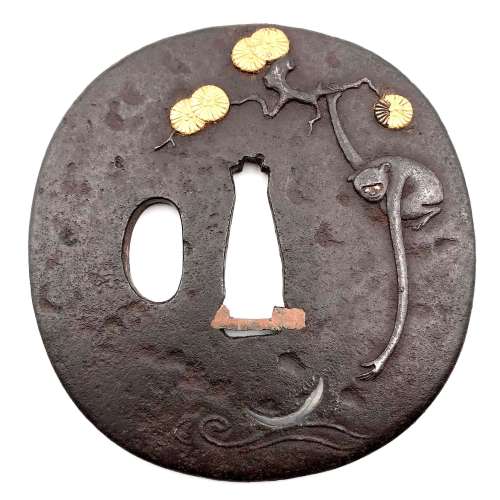

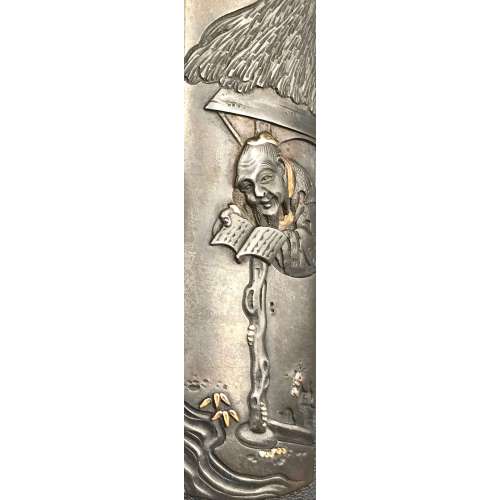
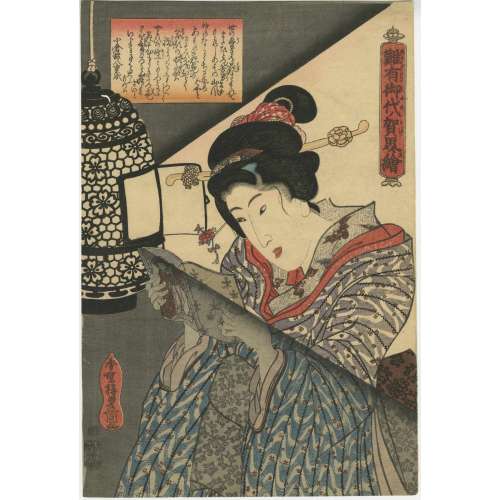
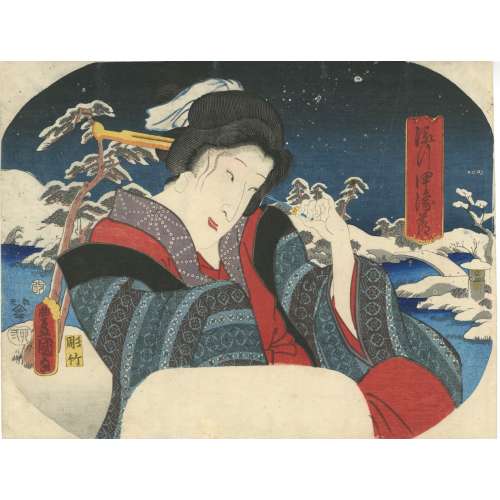
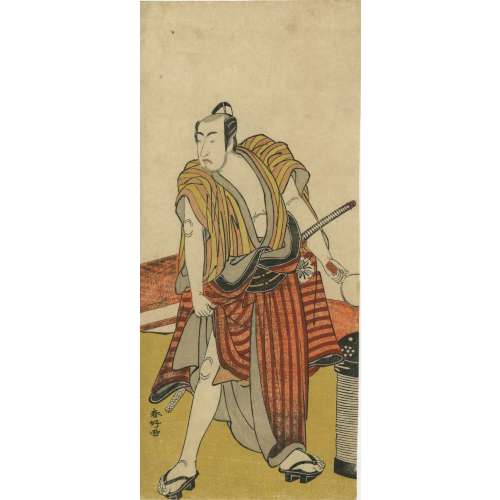
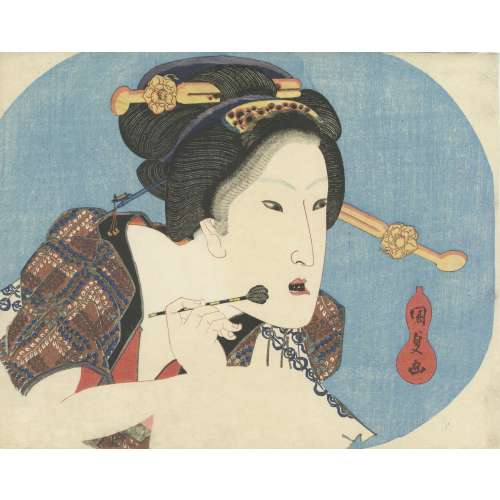
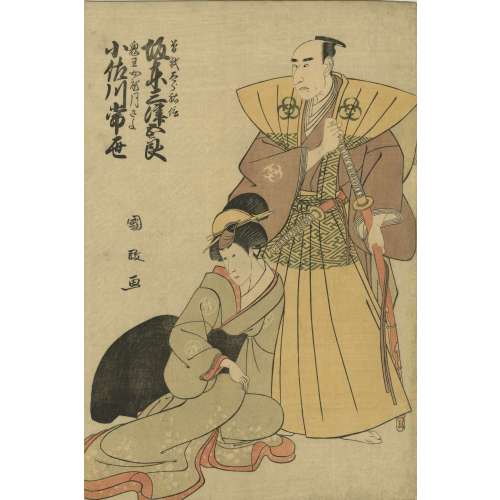
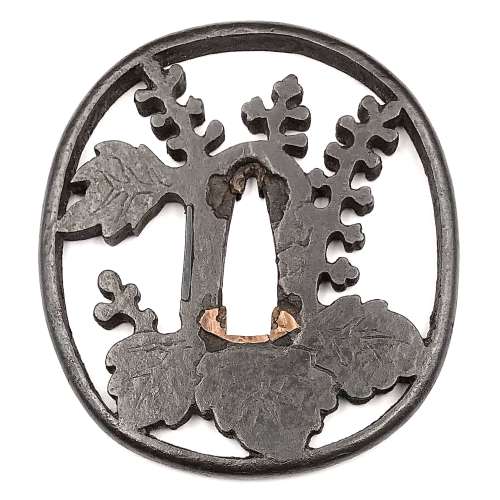
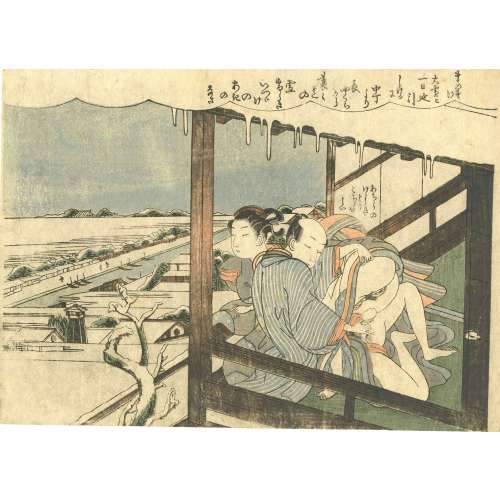
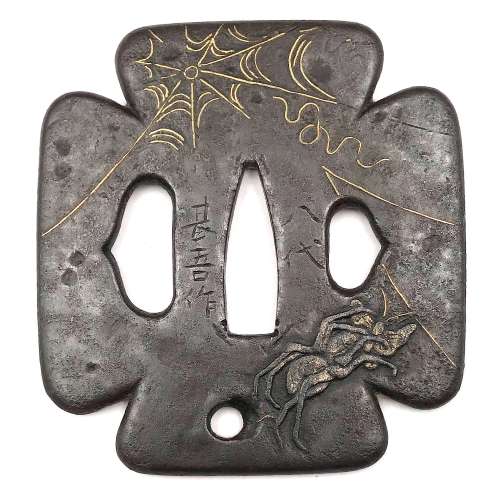
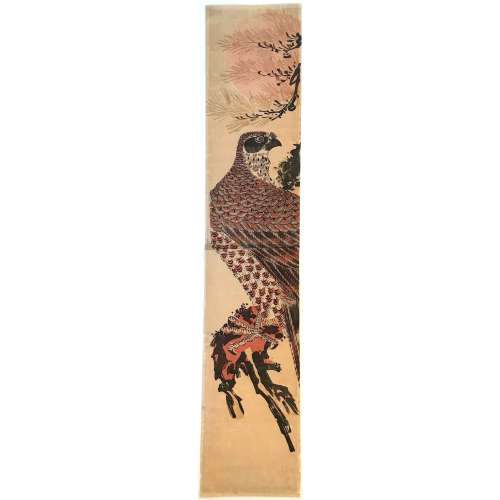
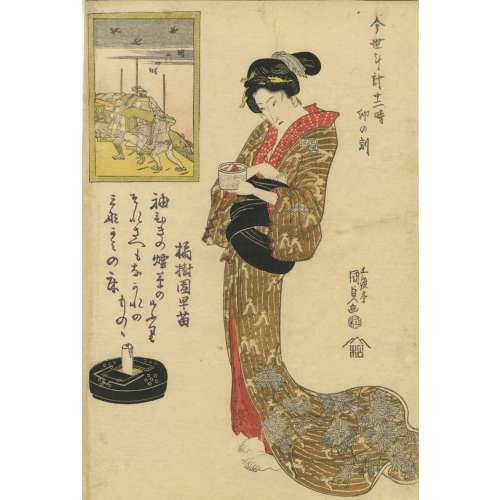
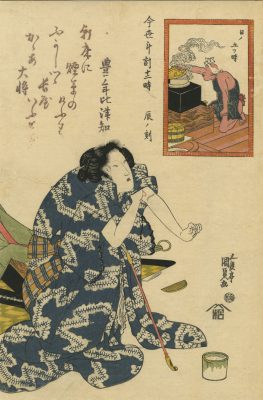
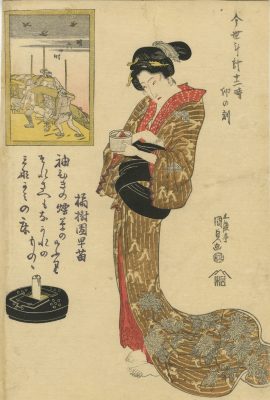
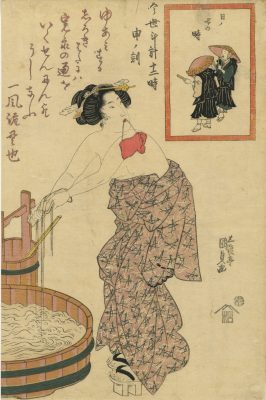
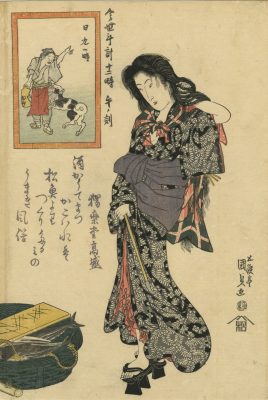
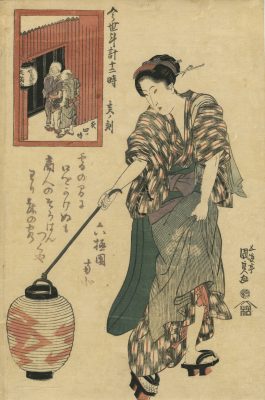
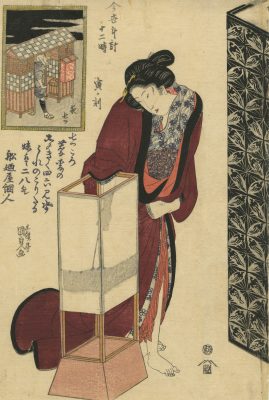
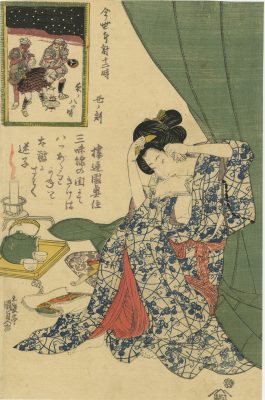
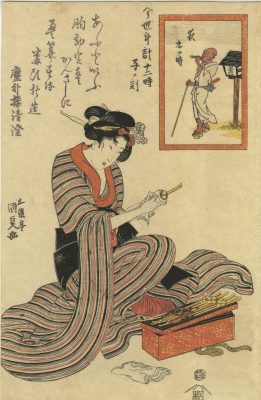
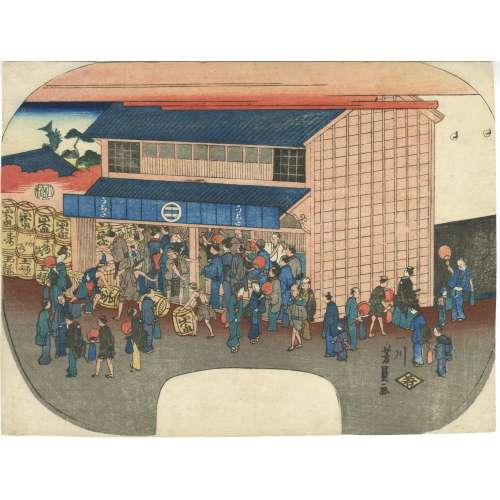
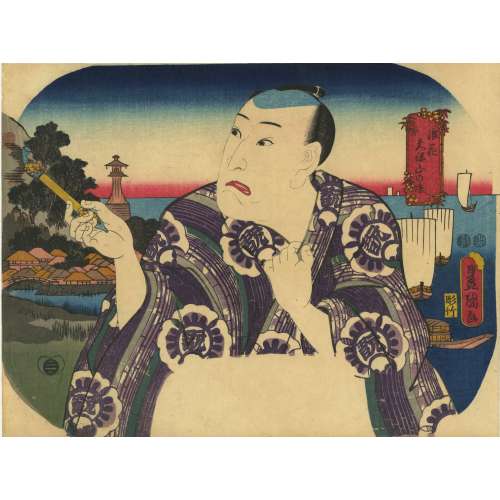
 As noted by Horst Graebner, the gentleman also resembles the character on another Kunisada's actor print, published in 1852 (Waseda University Cultural Resources Database №
As noted by Horst Graebner, the gentleman also resembles the character on another Kunisada's actor print, published in 1852 (Waseda University Cultural Resources Database № 
